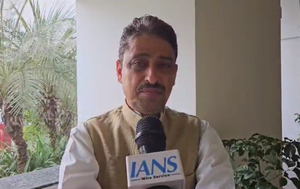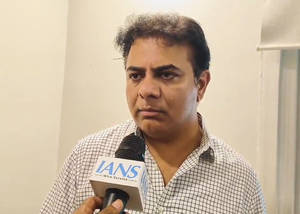Washington: In a bid to find concrete evidence of life outside Earth, NASA is developing a ‘chemical laptop’—the first portable, miniaturised laboratory built to detect both amino acids and fatty acids on other worlds. The device being developed at NASA’s Jet Propulsion Laboratory (JPL) in Pasadena, California analyses samples for materials associated with life. “If this instrument were to be sent to space, it would be the most sensitive device of its kind to leave Earth, and the first to be able to look for both amino acids and fattyacids,” said Jessica Creamer, a NASA postdoctoral fellow based at JPL. Like a tricorder from “Star Trek,” the Chemical Laptop is a miniaturised on-the-go laboratory, which researchers hope to send one day to another planetary body such as Mars or Europa.
It is roughly the size of a regular computing laptop, but much thicker to make room for chemical analysis components inside. But unlike a tricorder, it has to ingest a sample to analyse it, NASA said. “Our device is a chemical analyser that can be reprogrammed like a laptop to perform different functions,” said Fernanda Mora, a JPL technologist who is developing the instrument with JPL’s Peter Willis, the project’s principal investigator. “As on a regular laptop, we have different apps for different analyses like amino acids and fatty acids,” said Mora. Amino acids are building blocks of proteins, while fatty acids are key components of cell membranes. Both are essential to life, but can also be found in non-life sources. Amino acids come in two types: Left-handed and right-handed. Like the left and right hands of a person, these amino acids are mirror images of each other but contain the same components. Some scientists hypothesise that life on Earth evolved to use just left-handed amino acids because that standard was adopted early in life’s history.
It is possible that life on other worlds might use the right-handed kind. “If a test found a 50-50 mixture of left-handed and right-handed amino acids, we could conclude that the sample was probably not of biological origin,” Creamer said. “But if we were to find an excess of either left or right, that would be the golden ticket. That would be the best evidence so far that life exists on other planets,” she said. When the laptop is set to look for fatty acids, scientists are most interested in the length of the acids’ carbon chain. This is an indication of what organisms are or were present. The battery-powered Chemical Laptop needs a liquid sample to analyse, which is more difficult to obtain on a planetary body such as Mars.
Recent Random Post:
















